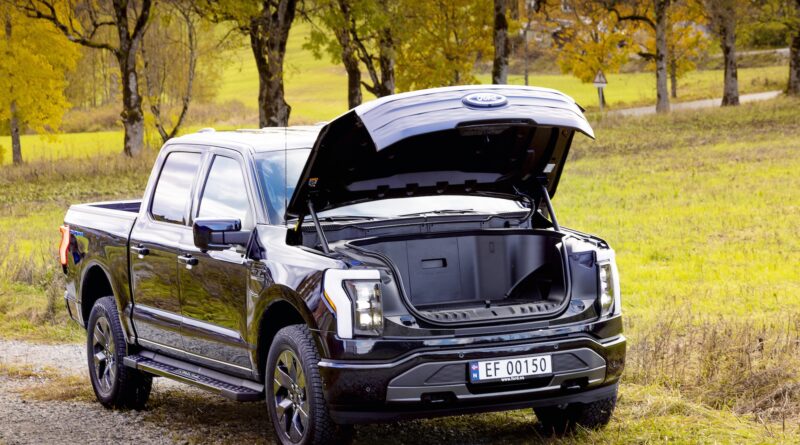Oh, Those (Too) Big EVs
The International Energy Agency’s Global EV Outlook 2024 is full of interesting statistics and interpretations, as it is every year. Of particular interest are its conclusions on the benefits of and problems with big EVs.
The report starts by giving an update on EV sales. Almost 14 million new EVs were registered globally in 2023, bringing their total number on the roads to 40 million, and those numbers were darn close to the 2023 forecast. EV sales in 2023 were 3.5 million higher than in 2022, a 35% year-on-year increase.
The number of available models for EVs increased 15% year-on-year to nearly 590. This was the result of automakers which scaled up electrification plans in order to appeal to a growing EV consumer base. On the other hand, the number of fully internal combustion engine (ICE)-powered models (without taking into account hybrids) declined for the fourth consecutive year in 2023 at an average of 2%.
The IEA predicts that there could be 1000 new EV models by 2028 — which means there could be as many EV as ICE car models before 2030.
 Chip in a few dollars a month to help support independent cleantech coverage that helps to accelerate the cleantech revolution!
Chip in a few dollars a month to help support independent cleantech coverage that helps to accelerate the cleantech revolution!
Why are There So Many Big EVs Entering the Marketplace?
In 2023, SUVs, pickup trucks, or large cars accounted for 65% of total ICE car sales worldwide, and more than 80% in the United States, 60% in China, and 50% in Europe. Only 25% of the 400+ launches expected over the 2024-2028 period are designed as small and medium models, and that’s a smaller share of available models than in 2023. Even in China, where small and medium models have been popular, new launches are typically for larger cars.
EVs are following the same trend as ICE vehicles, as they’re gaining in size every year and getting bigger on average. In 2023, two-thirds of the EV models on the market were SUVs, pickup trucks, or large cars. Just 25% of EV sales in the US were for small and medium models, compared to 40% in Europe and 50% in China. Tesla’s small SUV, the Model Y, released in 2020, was the most popular EV last year, with over 1.2 million units sold in 2023.
Big EVs follow a pattern in which automakers became really comfortable with oversized conventional SUVs and trucks in the US when less stringent tailpipe emissions rules created incentives to market more vehicles in that segment. That translated into a consumer love of all things big in personal transportation — after all, bigger is better, right?
So many car lovers desire high-profile vehicles due to their powerful identity connections. The mythology has transferred to EVs, since larger vehicles infuse a feeling of dominance and control on the road, in addition to being able to stretch out legs and carry the soccer team to and from meets.
Larger EVs also mean larger profit margins for automakers, always a salient motivator.
Switching from Big Conventional SUVs or Trucks to Big EVs Means Less Emissions
The electrification of transportation is imperative to reduce CO2 emissions, as, according to the US EPA, greenhouse gas (GHG) emissions from transportation account for about 28% of total US GHG emissions. That makes the transportation sector the largest contributor of US GHG emissions. To add in more injury to the stats, between 1990 and 2022, GHG emissions in the transportation sector increased more in absolute terms than any other sector.
Switching to electric in the SUV and larger car segments can therefore achieve immediate and significant CO2 emissions reductions. Electrification also brings considerable benefits in terms of reducing air pollution and non-tailpipe emissions, especially in urban settings. Even long haul electric trucking, it seems, is becoming a good match for autonomous driving.
In 2023, as the IEA report hypothesizes, if all ICE and hybrid EV sales of SUVs had instead been battery EVs, around 770 Mt CO2 could have been avoided globally over the cars’ lifetimes. This is equivalent to the total road emissions of China in 2023.
An article in MIT Technology Review argues that, if some drivers are willing to buy an EV but aren’t willing to downsize their cars, then having larger electric options available could be “a huge lever for climate action.” A Coltura report concurs, saying that putting a premium on programs to help the most gasoline-burdened drivers switch to EVs will save those drivers more money and avoid more pollution, while also optimizing the impact of public and private investments in cleaner transportation.
Big EVs have a Significant Impact on Supply Chains & Critical Mineral Demand
Larger electric car models have a significant impact on battery supply chains and critical mineral demand.
In 2023, the sales-weighted average battery-electric SUV in Europe had a battery almost twice as large as the one in the average small electric car, with a proportionate impact on critical mineral needs. When comparing electric SUVs and medium-sized EVs, the SUV battery is 25% larger. This means that if all electric SUVs sold in 2023 had instead been medium-sized cars, around 60 GWh of battery equivalent could have been avoided globally, with limited impact on range. This would be equivalent to almost 6,000 tons of lithium, 30,000 tons of nickel, almost 7,000 tons of cobalt, and over 8,000 tons of manganese.
Larger batteries also require more power, or longer charging times, which can put pressure on electricity grids and charging infrastructure by increasing occupancy. That need could create issues during peak utilization, as the IEA reminds us, such as at highway charging points at high traffic times. Because they are heavier, larger models also have higher electricity consumption. The additional energy consumption resulting from the increased mass is mitigated by regenerative braking to some extent, but in 2022, the sales-weighted average electricity consumption of electric SUVs was 20% higher than that of other electric cars.
It makes sense that big EVs also require greater quantities of materials such as iron and steel, aluminum, and plastics, and with those requirements come a higher environmental and carbon footprint for materials production, processing, and assembly.
The Human Consequences of those EV Behemoths
Over the past 30 years, the average US passenger vehicle has gotten about 4 inches wider, 10 inches longer, 8 inches taller, and 1,000 pounds heavier. Many vehicles are more than 40 inches tall at the leading edge of the hood. On some large pickups, the hoods are almost at eye level for many adults. Vehicles with hoods more than 40 inches off the ground at the leading edge and a grille sloped at an angle of 65 degrees or less are 45% more likely to cause pedestrian fatalities than those with a similar slope and hood heights of 30 inches or less.
Larger vehicles are harder on roads, so their upkeep is more expensive. SUVs and other big vehicles are much more dangerous for pedestrians, too. Vehicles with higher front ends and blunter profiles are 45% more likely to cause fatalities in crashes with pedestrians. Cost-of-ownership analyses favor small- and medium-sized EVs, too, due to 8 cost factors: depreciation, fees & taxes, financing, fuel, insurance, maintenance, opportunity cost, and repairs.
A focus on EVs that are lighter, safer, cleaner, and smaller will ensure a better tomorrow for everyone.
Have a tip for CleanTechnica? Want to advertise? Want to suggest a guest for our CleanTech Talk podcast? Contact us here.
Latest CleanTechnica.TV Videos

CleanTechnica uses affiliate links. See our policy here.

